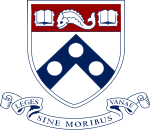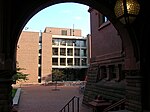University of Pennsylvania School of Engineering and Applied Science

The University of Pennsylvania School of Engineering and Applied Science, more commonly known as Penn Engineering or SEAS, is an undergraduate and graduate school of the University of Pennsylvania. The School offers programs that emphasize hands-on study of engineering fundamentals (with an offering of approximately 300 courses) while encouraging students to leverage the educational offerings of the broader University. Engineering students can also take advantage of research opportunities through interactions with Penn’s School of Medicine, School of Arts and Sciences and the Wharton School.Penn Engineering offers bachelors, masters and Ph.D. degree programs in contemporary fields of engineering study. The nationally ranked bioengineering department offers the School’s most popular undergraduate degree program. The Jerome Fisher Program in Management and Technology, offered in partnership with the Wharton School, allows students to simultaneously earn a Bachelor of Science degree in Economics as well as a Bachelor of Science degree in Engineering. SEAS also offers several masters programs, which include: Executive Master’s in Technology Management, Master of Biotechnology, Master of Computer and Information Technology, Master of Computer and Information Science and a Master of Science in Engineering in Telecommunications and Networking.
Excerpt from the Wikipedia article University of Pennsylvania School of Engineering and Applied Science (License: CC BY-SA 3.0, Authors, Images).University of Pennsylvania School of Engineering and Applied Science
Grays Ferry Bridge Path, Philadelphia South Philadelphia
Geographical coordinates (GPS) Address Nearby Places Show on map
Geographical coordinates (GPS)
| Latitude | Longitude |
|---|---|
| N 39.951775 ° | E -75.190217 ° |
Address
University of Pennsylvania
Grays Ferry Bridge Path
19104 Philadelphia, South Philadelphia
Pennsylvania, United States
Open on Google Maps







